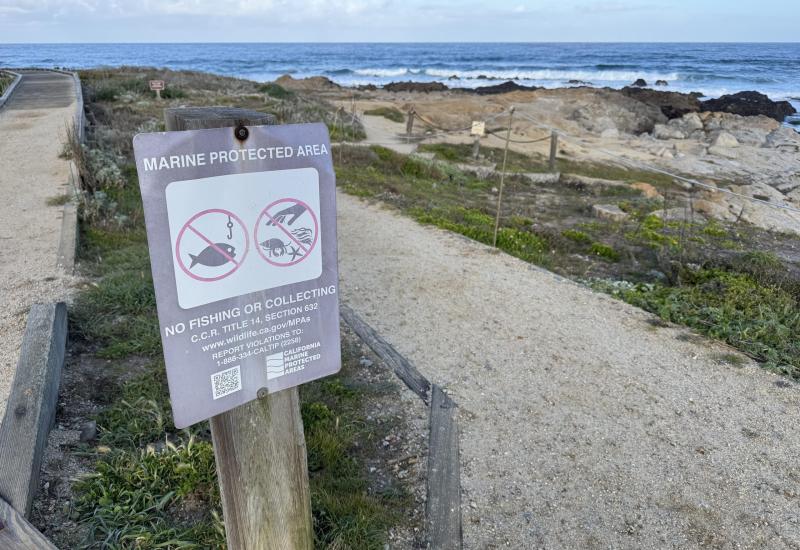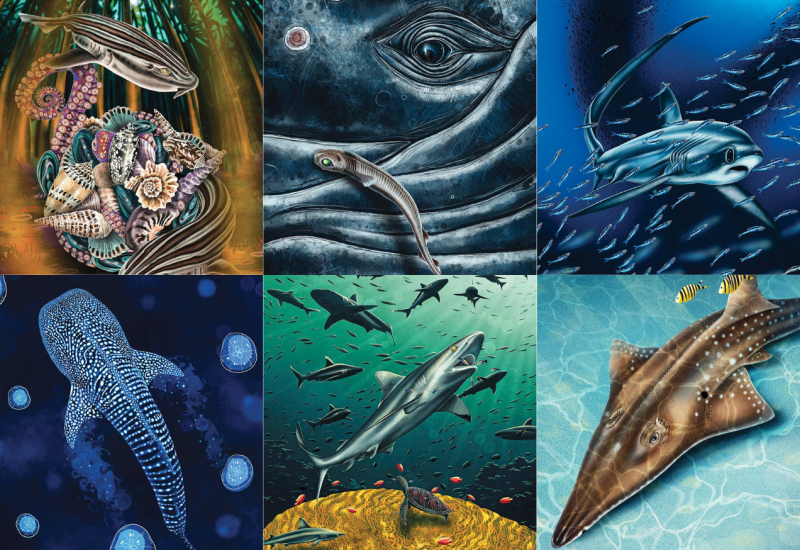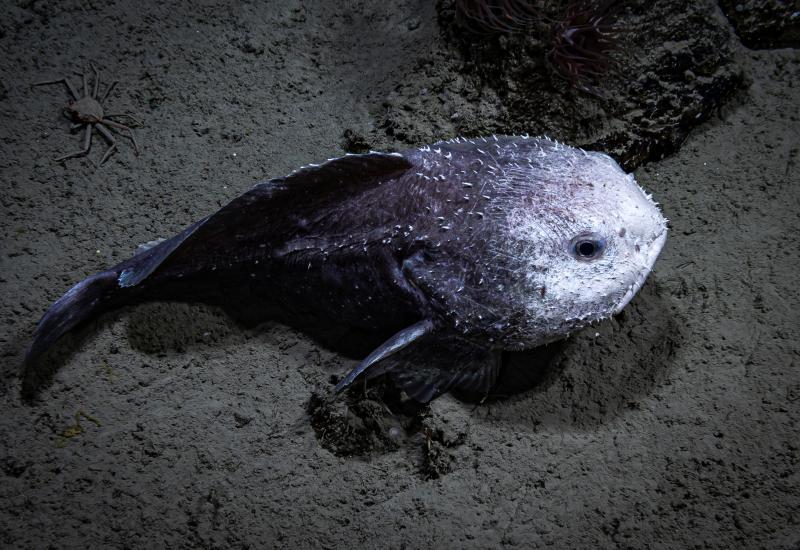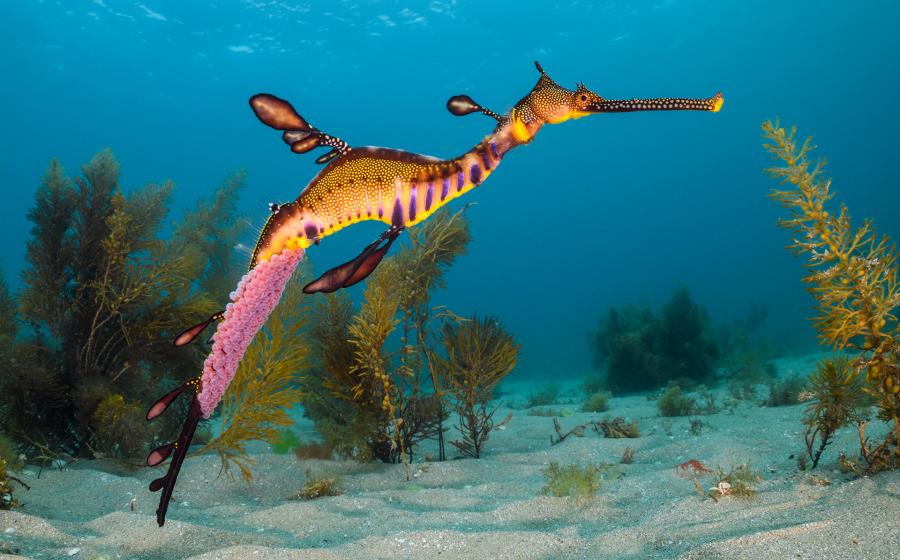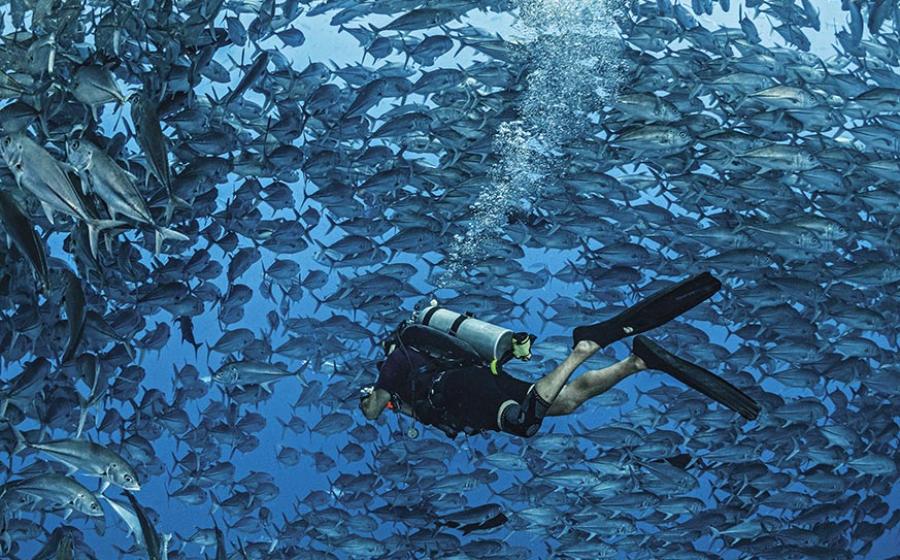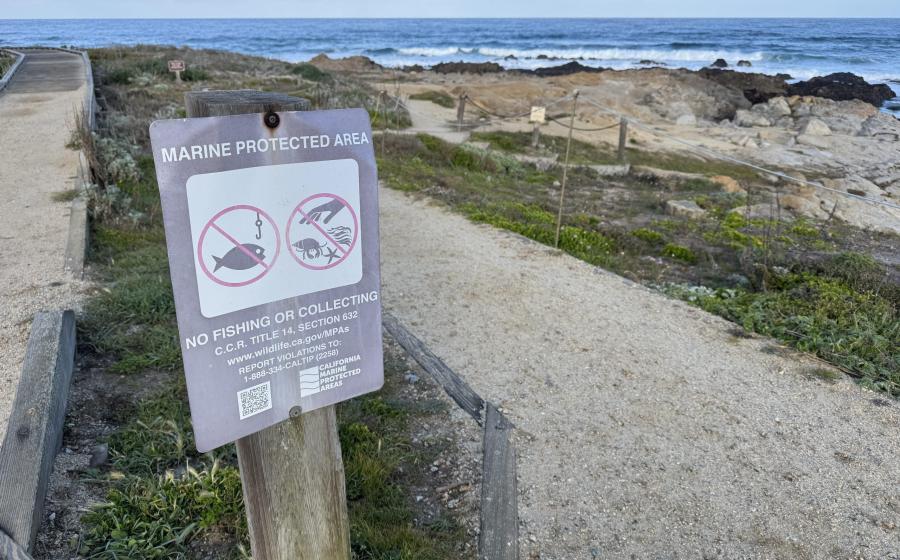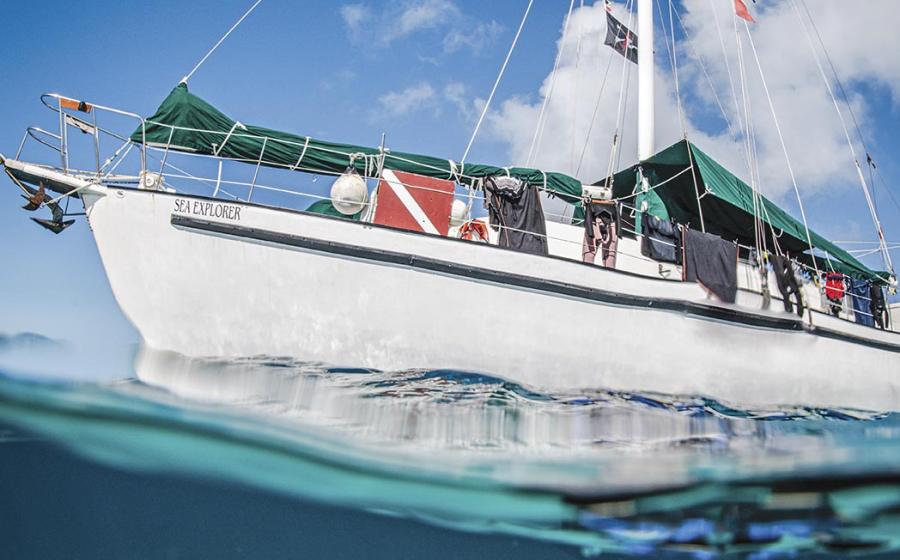Fantastic Fathers of the Sea
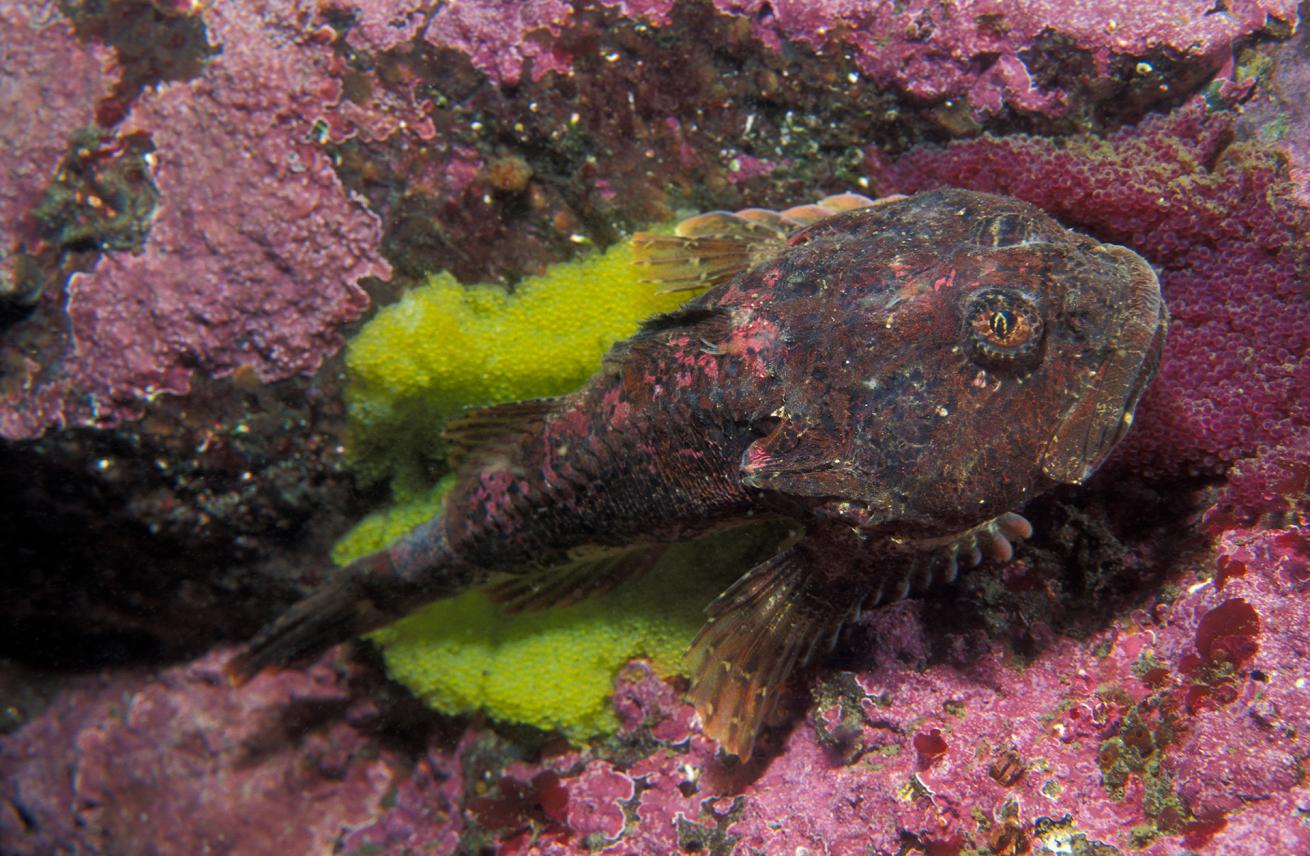
Brandon ColeA buffalo sculpin (Enophrys bison) male guarding clutches of purple and yellow eggs in the Pacific Northwest.
Guarding the Next Generation
Generally speaking, fish fathers are love ’em and leave ’em types. Most of the males in the 30,000-plus known marine fish species have nothing to do with raising their young after spawning. Thankfully, the ocean is a big neighborhood with room for both those flakey traditionalists and the select, progressive papas who actively endeavor to improve survival odds for their offspring.
Take, for example, the brilliantly orange Garibaldi (Hypsypops rubicundus) found in southern California’s coastal kelp forests and rocky reefs. The male builds and meticulously tends a nest of specific red algae into which a female (usually multiple females) lays 15,000 to 80,000 yellow eggs. After fertilizing the eggs, dad shoos away mom(s) and then fiercely, tirelessly guards the eggs from all hungry passersby until his offspring hatch a few weeks later and the tiny larvae disperse into the plankton.
In the cooler waters of the Pacific Northwest and Alaska, divers often encounter other fish fathers defending clutches of developing eggs, such as the buffalo sculpin (Enophrys bison), lingcod (Ophiodon elongatus), and whitespotted greenling (Hexagrammos stelleri).

Brandon ColeA male yellowhead jawfish incubating eggs in mouth. Look closely to see eyes of developing embryos.
Mouthbrooding
Male mouthbrooding fishes protect eggs in their mouth, a clever strategy to keep their next generation off the menu of would-be predators and safe from other environmental dangers. Most jawfish, belonging to the family Opistognathidae, are paternal mouthbrooders. Distributed from Florida and the Bahamas throughout the Caribbean, yellowhead jawfish (Opistognathus aurifrons) are common residents of sandy slopes and rubble patches typically found between 10 and 60 feet deep.
Male yellowheads aerate their precious cargo by periodically spitting out, and then sucking back in, the ball of eggs. This “churning” ensures adequate and even oxygenation that is critical for healthy development. Mouthbrooding shows true commitment, since the dad cannot feed itself during the incubation time, which is one to two weeks for the yellowhead jawfish.
Ringtailed cardinalfish (Ostorhinchus aureus) and others in family Apogonidae are another example of paternal mouthbrooders.

Brandon ColeA common seadragon hovers over the bottom amongst seaweeds in the shallows. This male has a clutch of pink eggs attached to the underside of its tail. Males brood 200 to 300 eggs in late spring into early summer, each about 4mm in diameter.
Syngathid Pregnancy
Seahorses, pipefishes and seadragons similarly have unorthodox parental roles for male fishes. Over the 50 some million years they have been swimming about our planet’s seas, evolution has crafted some male members of family Sygnathidae into fantastic fathers. Seahorse fathers—such as big-belly Seahorses (Hippocampus abdominalis) from southern Australia and New Zealand—undergo true pregnancy! After a female transfers eggs into a pouch on her partner’s belly, he takes over. He fertilizes the eggs and they begin their incubation in his pouch, which is similar to a female mammal’s uterus, complete with a placenta-like structure that nourishes the developing embryos. After gestation, he endures labor (complete with contractions) and gives birth to miniature seahorse fry ready to live on their own.
Male pipefishes and seadragons also carry the eggs, though they are not kept inside asa brood pouch. Common seadragons (Phyllopteryx taeniolatus), also called weedy seadragons, are regulars around jetties and in seaweed gardens in shallow waters of southern Australia. Male seadragons brood 200-300 eggs for about 8 weeks in the late austral spring and early summer, after which the eggs hatch, releasing 35mm-long dragonlings into the big blue. Strong fathers may be impregnated twice in a year and with good fortune thereby give birth to a second batch of babies.
The equally spectacular but even more cryptic leafy seadragon (Phycodurus eques) is also endemic to Australia’s cool southern seas and performs similar dad duties.

Brandon ColeAll pink anemonefish are born male, but some individuals in each group will eventually become female because of their unique social hierarchy.
Gender Fluid Fish
At least 500 species of fish undergo sex changes, for a variety of environmental and social reasons. Most transition from female to male, called protogynous hermaphroditism, as exhibited by many wrasses. But some fishes, such as the anemonefishes (popularly called clownfish, aka “Nemo”) in subfamily Amphiprioninae, are protandrous hermaphrodites, going the other direction. All are born male, but some individuals in each group will eventually become female because of their unique social hierarchy. For example, in a group of pink anemonefish (Amphiprion perideraion) living in symbiotic association with their host sea anemone, the largest fish is always a mature, breeding female. If she dies or leaves then the second largest fish, the breeding male, will change gender to female and grow to fill the vacancy. The fish becomes the dominant female breeder for the betterment of the family; larger females lay more eggs. In anemonefish society, a female’s reproductive value is greater than that of a male.
Finally, some fish are bidirectional sex changers like the dwarf hawkfish (Cirrhitichthys falco), can transition back and forth again and again depending on the changing environment. Wow.
Nonconformists are Everywhere
Life forms must adapt, doing whatever it takes to pass on their genes. These forward-thinking fishes who redefine fatherhood are living, evolving proof that necessity is indeed the mother (or father?) of invention!

